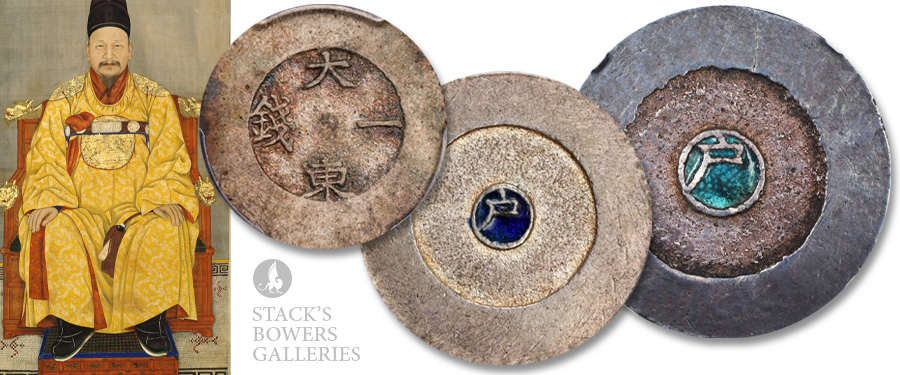
The Stack’s Bowers Galleries October 2024 Hong Kong Showcase Auction features a terrific assortment of Chinese and other Asian coins. Alongside some tremendous rarities from the milled series, the sale’s Korean section also includes numerous examples from the short-lived but highly interesting Tae Dong series of silver coins.
The late 19th century saw the waning period of Korea’s Joseon Era under its last ruler, Gojong. Having gained a reputation among other nations as an isolationist “hermit kingdom,” Joseon faced pressure to modernize and open its economy lest it fall further behind its more powerful neighbors, Qing Dynasty China and Imperial Japan. East Asian trade at the time was dominated by high-purity silver “dollars” such as the Chinese Yuan, Japanese, Yen, and Mexican 8 Reales. Korea, by contrast, continued to rely on small copper coins with limited value outside the borders of Joseon.
In 1882, the state introduced a series of silver coins aimed at modernizing its trade. The coins came in three sizes denominated in Chon (or 1/10 ounce): 1 Chon, 2 Chon, and 3 Chon. Like the coins of its neighbors, these were produced to high standards of silver weight and purity. However, because Joseon lacked the sophisticated equipment needed to produce milled coinage, these new coins were cast. One side bears four Hanja characters, giving the coin’s denomination read right to left, and Tae Dong (“Great East,” an archaic name for Korea) read top to bottom. The opposite side displays only one character, Ho, as a mintmark. This central character was filled in at the mint by a glossy cloisonné enamel coating in black, blue, or green. It is this unusual trademark that sets this series apart from any other East Asian coinage.
It is uncertain why the mint chose to employ this expensive and labor-intensive technique, which required each coin to be refired in order to melt and set the glass powder. If the objective was to make the coins appear more valuable, it may have worked too well; they quickly fell out of circulation as the upper-class Yangban population hoarded the intrinsically valuable silver coins. Since the coins did not have the desired effect, Joseon authorities quickly discontinued their production in 1883, only months after the coins were first minted. Fourteen years later, the Joseon Era itself came to a close with the proclamation of the Korean Empire.
Today, these peculiar coins are popular with collectors, many of whom aim to assemble a complete set of denominations and colors. As the enamel is inevitably prone to chipping through the years, complete examples in higher grades are rather scarce. Click Here to browse Stack’s Bowers Galleries’ fine assortment of this series, including all three denominations and all three enamel colors. Live bidding for Session 5 begins on October 17 at 10:00 AM HKT (7:00 PM PST).
We are always seeking coins, medals, and paper money for our future auctions, and are currently accepting consignments for our January 2025 NYINC, and Spring 2025 Hong Kong auctions. If you would like to learn more about consigning, whether a singular item or an entire collection, please contact one of our consignment directors today at 800-458-4646 or Consign@StacksBowers.com.





